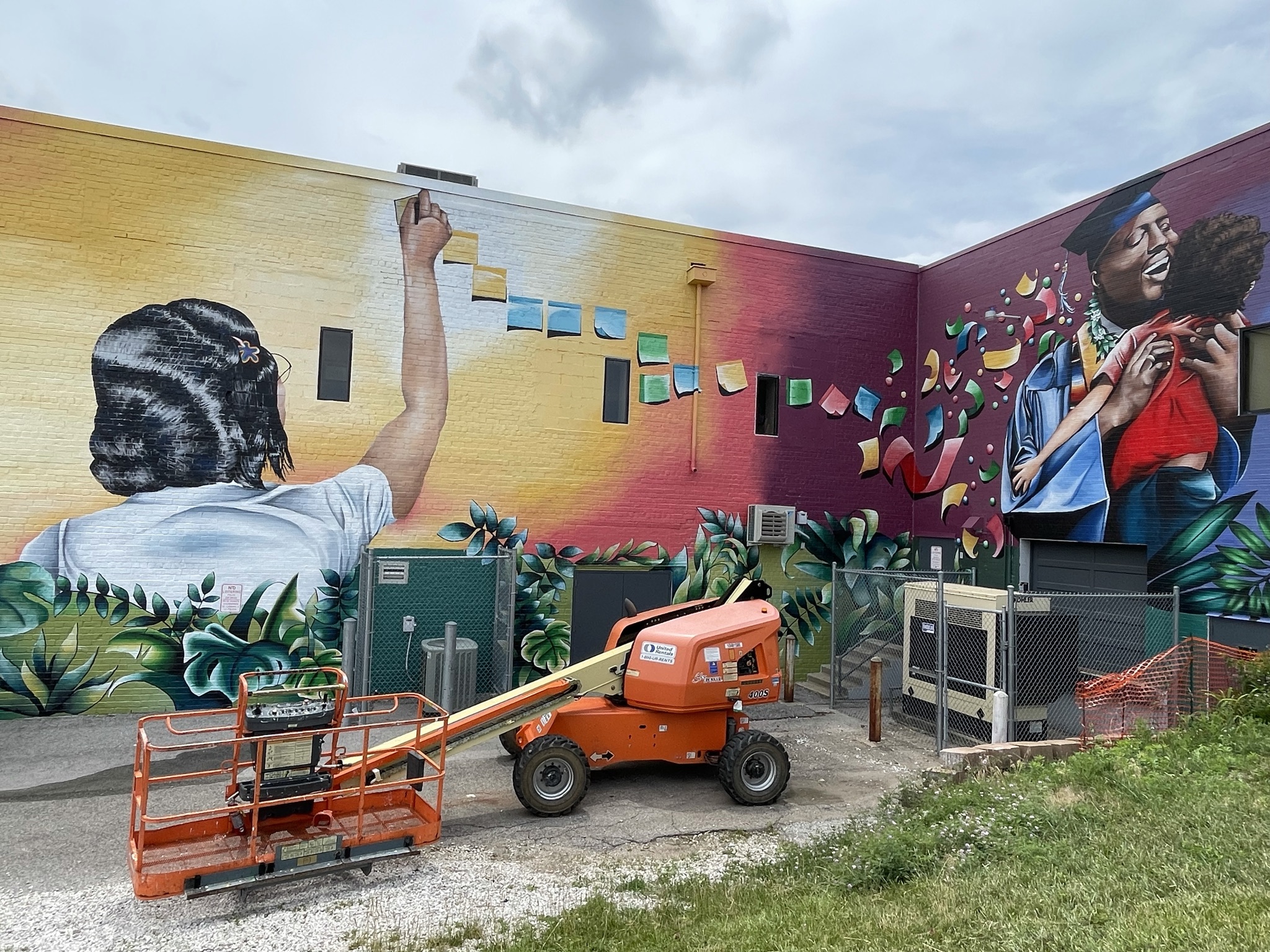I have often felt either exposed or invisible in my own hometown.
In classrooms, workplaces and even driving along city streets, I’ve felt the duality of being surveilled as a Black woman and also disregarded because of it.
Black people make up 11.3% of Des Moines’ population and 4% of Iowa’s. We have built lives in cities that are ranked among the worst places in the nation for Black people to live. Part of our lived experience as Black Iowans is loving ourselves in spite of our fellow Iowans’ efforts to marginalize us.
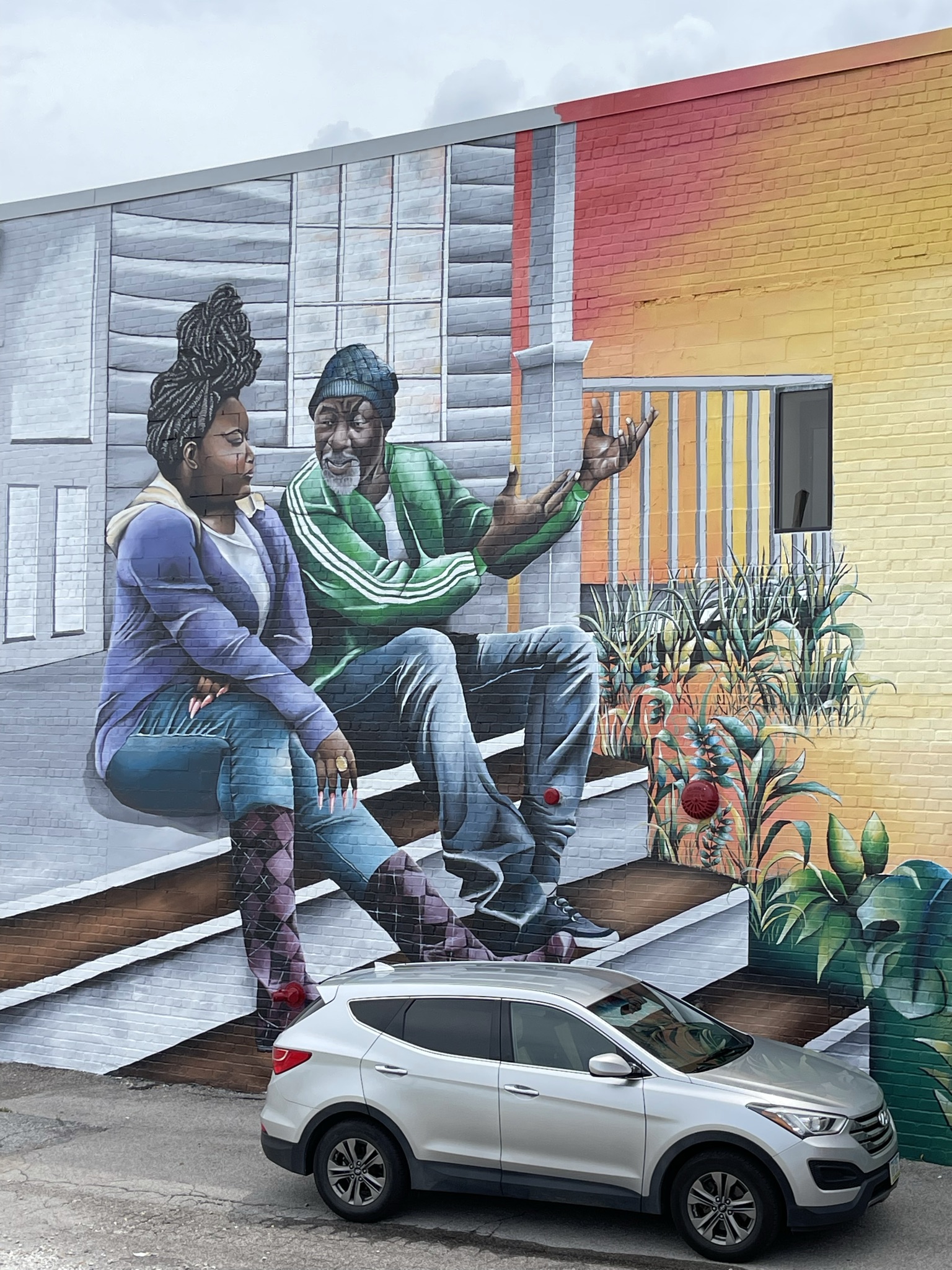
After the murder of George Floyd in Minneapolis police custody in 2020, my husband and I would drive around the city, and I would take photos of the Black Lives Matter signs displayed prominently in residents’ lawns. From economically challenged neighborhoods to wealthier ones across town, it felt affirming to know people of all hues could coalesce around us. A temporary salve however, as many of the signs no longer remain.
During one of the drives we took to flee the stress of the Coronavirus pandemic, which harmed Black Iowans disproportionately, we drove along University Avenue. As we crossed the busy intersection at Sixth Avenue, north of downtown, I heard my husband gasp.
That’s when I first caught a glimpse of Future by artist Jill Wells. I turned our SUV around and sped over to the mural, thinking: Who painted Black people on the side of a building? In Des Moines.
The mural by Wells and Marissa Hernandez, both Drake University alumnae, is a permanent installation commissioned by the Community Foundation of Greater Des Moines. The mural is located along the north side of the Evelyn K. Davis Center for Working Families, an organization that has programs to fight poverty and help small business owners.
We took in the mural’s scenes. A Black woman and man conversed on the steps of a home. Sticky notes became graduation confetti as a graduate held a child. A group of people embraced. A Black couple glanced lovingly at their children, tie-clad and briefcase in tow. The mural is inspirational. One of its central themes depicts the American dream of home ownership, which remains elusive for many Black Iowans.
- 70% of Black Iowans are renters, compared with 28% of all Iowans, according to state data.
- About 22% of Black Iowans over the age of 25 are college graduates, compared with 30.5% of all Iowans, according to a 2023 fact sheet by the State Data Center of Iowa and the Iowa Commission on the Status of African Americans.

I’ve wondered for years whether the city reflects our history and culture. What Black landmarks or large scale works of art exist? I could think of my favorite piece by artist Kerry Marshall, A Monumental Journey, located downtown, which marks the founding of the National Bar Association in Des Moines in 1925 by 12 Black lawyers.
Then came murals by Wells, and others, who centered representation at the core of her work. Her murals felt like a revolutionary act. The pandemic isolated us. Politics divided us. Suddenly, she and other artists transformed unremarkable buildings into glowing, towering and positive representations of Black life.
A little over a mile away from the Future mural sits Black Renaissance, which debuted last October. The mural is located just south of 24th Street and University Avenue at xBk Live. In the mural, a young Black singer is flanked by moody flowers, clutching a microphone, long braids trailing behind her. Hair braiding is such an integral part of Black culture. Many Black girls and women have worn their hair just like the singer.
DANA JAMES, WRITER & FOUNDER, BLACK IOWA NEWS“Seeing such a nuanced depiction of Black woman joy on the side of a building in the center of Des Moines subtly changed my perception of the city.”
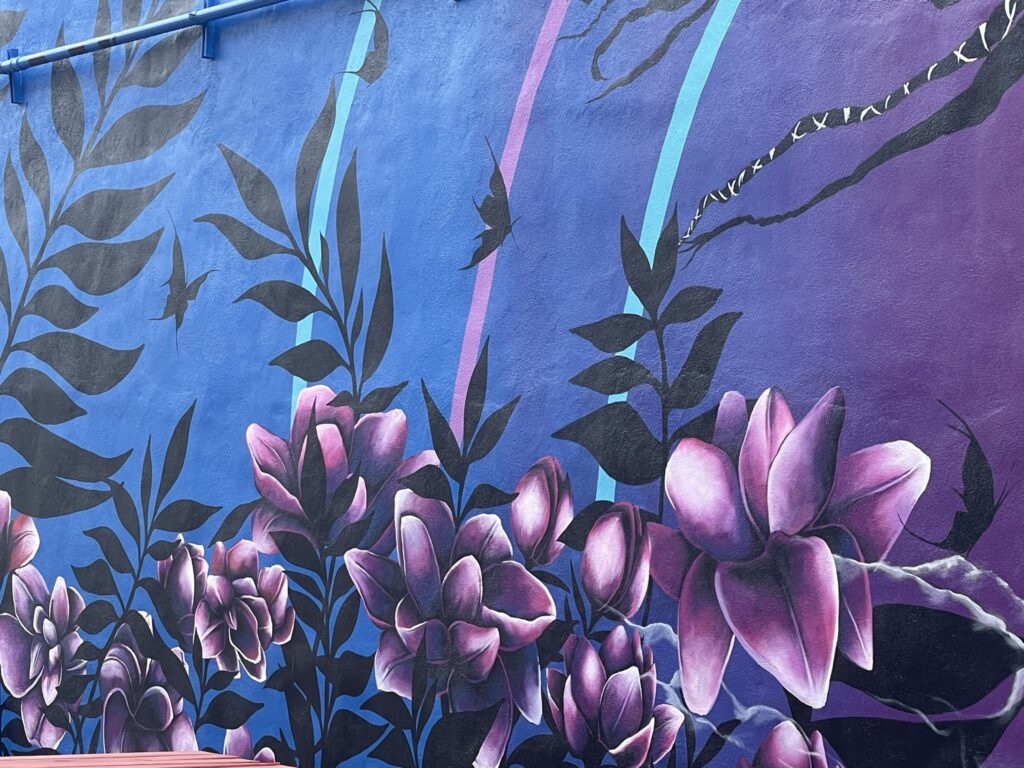
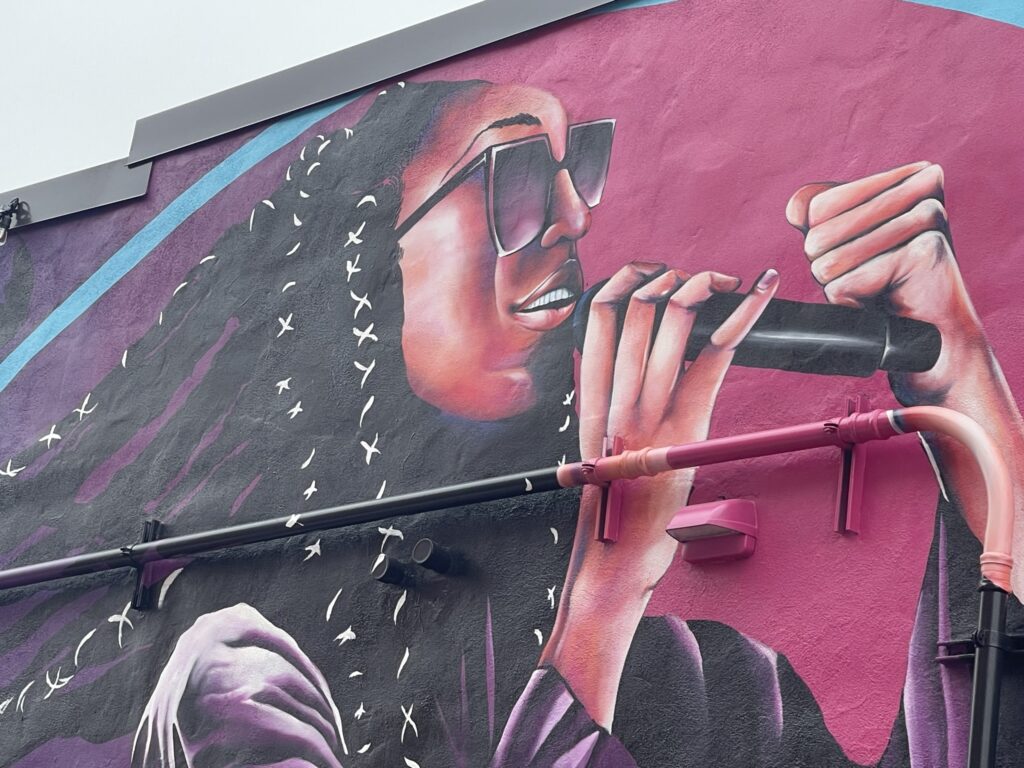
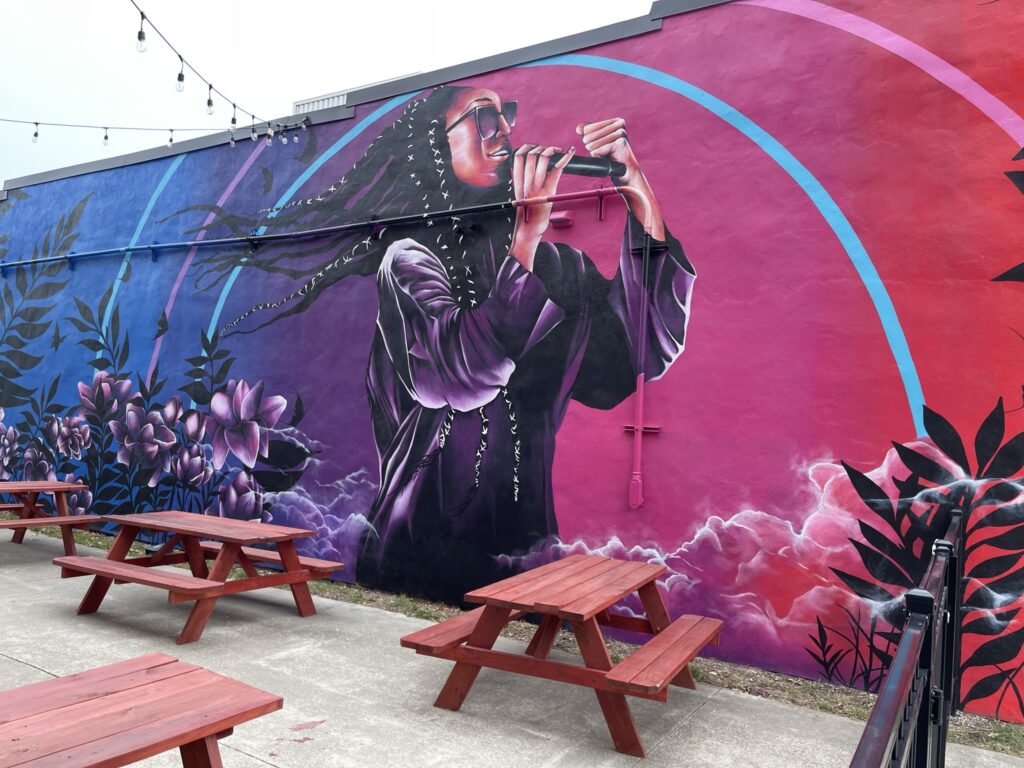
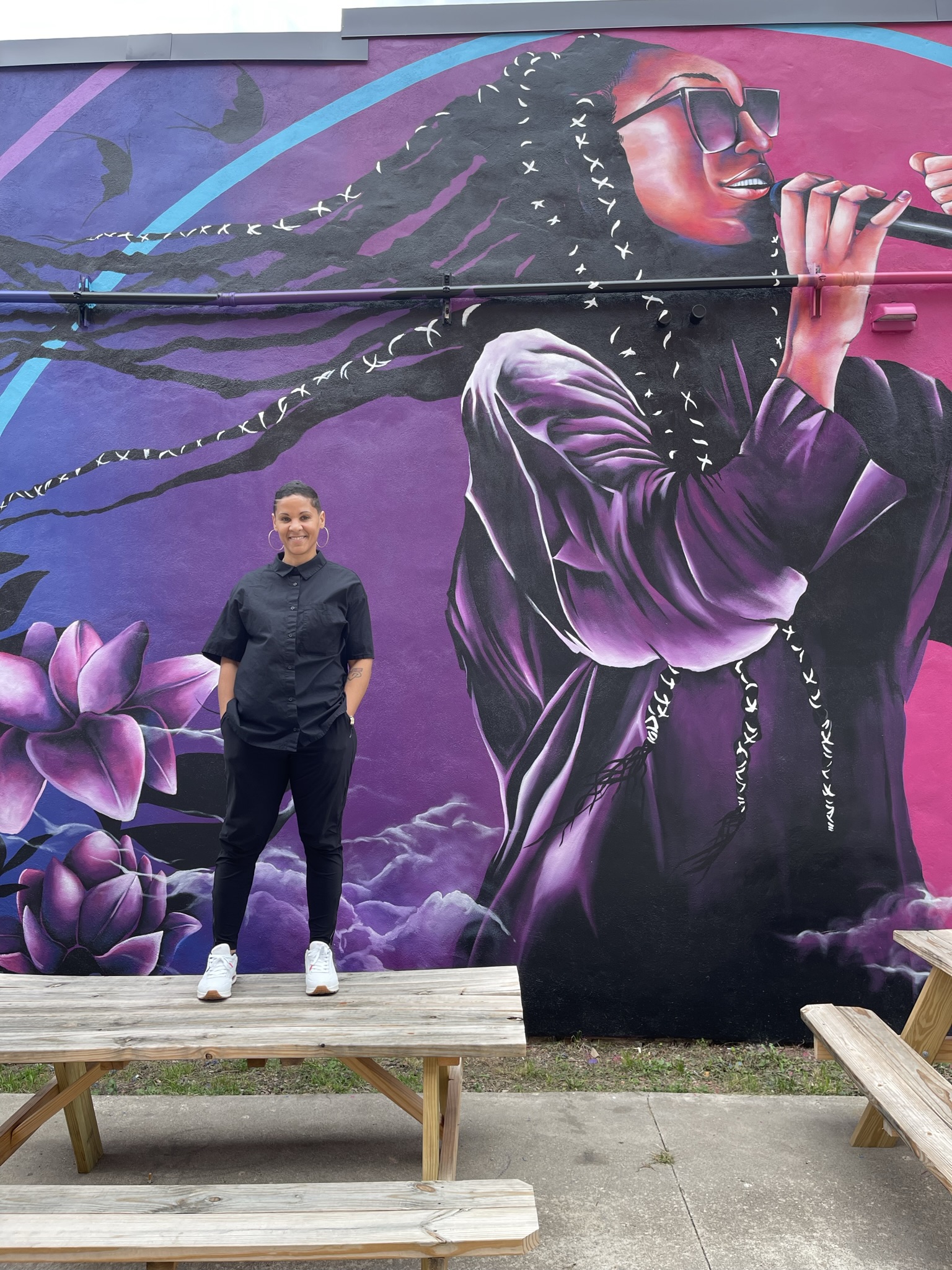
Wells said: “The Lotus flowers and foliage symbolize resilience, the black butterflies symbolize transition and renewal and the mural’s moody ombre color palette of blue, black, purple and pink speak of royalty and dignity. The mural’s design captures the spirit of music, Black entrepreneurship and community success.”
Black Renaissance captured the joy I’ve felt getting my hair braided and even braiding other Black women’s hair. Seeing such a nuanced depiction of Black woman joy on the side of a building in the center of Des Moines subtly changed my perception of the city.
Braids and baby hair. Representation.
Young Black children in Des Moines will grow up seeing themselves reflected in the murals’ themes. Might they, in our city divided by imaginary red lines, feel seen in a way that I never quite have? Wells’ soaring murals across the state have the power to revolutionize how we see ourselves and maybe how others see us as well.
Wells is correct. Representation matters.
